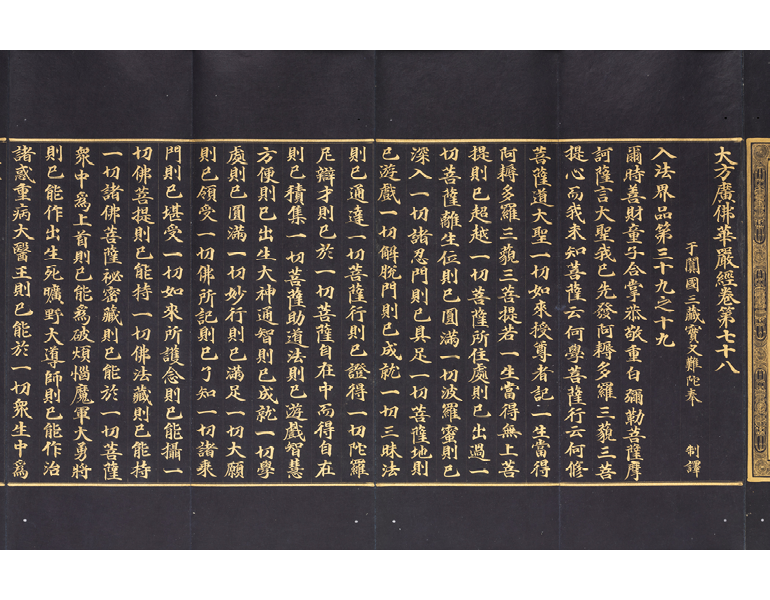Interpretation of Materiality: Gold
- Gallery Rotation
Korea Foundation Gallery

Avatamsaka Sutra No. 78 (detail), 1200s–1300s. Korea, Goryeo period (918–1392). Folded book with illustrated frontispiece; gold and silver on mulberry paper; book: 20.6 x 43.7 cm; each page: 20.7 x 11 cm. The Cleveland Museum of Art, The Severance and Greta Millikin Purchase Fund, 1994.25
About The Exhibition
Due to its remarkable malleability and durability, gold has been widely used in artifacts for the wealthy and for royalty since the fifth millennium BC. In Korean art, this precious mineral was the main material for luxury goods during the Three Kingdoms period (57 BC−668). In The Book of Pleasant Journeys into Faraway Lands, the author Muhammad al-Idrisi (1099−1166) writes: “Gold is too common in the Silla kingdom. Even the dog’s leash and the monkey’s collar are made of gold.”
This exhibition illuminates how Korean artists from ancient times to the present day creatively used and interpreted gold and its distinctive materiality. One highlight is the 13th-century Buddhist text Avatamsaka Sutra No. 78. Mixed with ink and glue, refined gold powder was applied on the smooth surface of the dark blue, indigo-dyed mulberry paper. In the practice of copying a Buddhist sutra, gold served as the perfect medium to visualize the splendid world of Buddhas and their awakening teachings.
Featured Art
Sponsors
The establishment of this gallery was made possible by the support of the Korea Foundation and the National Museum of Korea, Republic of Korea.
The casework in the Korea Foundation Gallery has been generously funded by the National Museum of Korea, Republic of Korea.